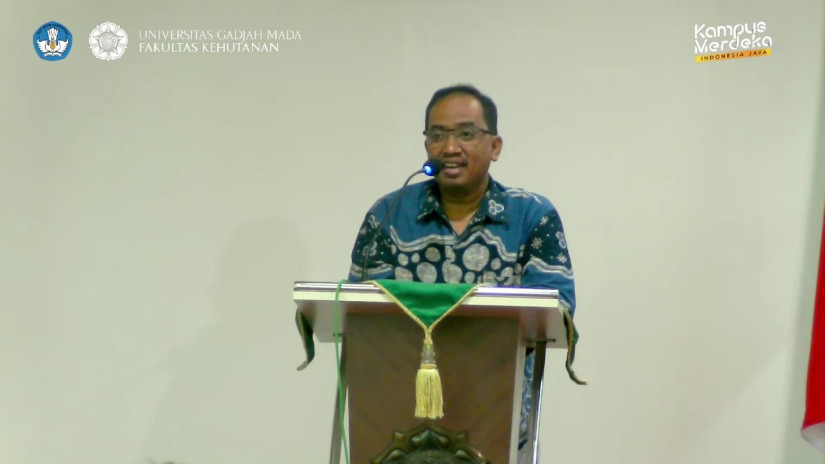
The Ministry of Environment and Forestry reported that 104 thousand hectares of Indonesian forests were deforested between 2021 and 2022.
This situation raises questions regarding the utilization of forest products and the application of sustainability aspects, considering that forests not only produce vital oxygen and provide a habitat for wildlife but also promise promising commodities.
Professor Tibertius Agus Prayitno of the UGM Faculty of Forestry mentioned the need to balance two different parameters.
“If we had around 170-180 hectares before being opened, after being opened, there were only 100 hectares left. So, a significant decrease occurred. The production volume from the forests also declined,” Professor Prayitno said during a seminar titled “Forest Management for Forest Sustainability” on Thursday (October 19).
“If it’s like this, sustainability parameters need to be questioned. How do we maintain the forest while adapting to the needs of the industry?”
“Every forest management policy should have 60% associated with trees. If a policy has less than 60% concerning trees, it’s worth questioning.”
The policy would greatly determine the direction of forest management, whether it pertains to forest preservation or forest production. According to Professor Prayitno, forest products must have service parameters.
This aspect assesses whether wood-based products can be utilized for a long time. In this case, the selection of wood types for production should be aligned with the type of product to be manufactured.
“For example, if the wood can provide a longer service life than its inhabitant, its service parameters are extraordinary,” he added.
“Thus, in connecting forest management and forest product processing, apart from matching the quality of forest products for construction and non-construction suitability, this service parameter aspect still exists.”
Forest preservation is also directly influenced by the irresponsible opening of land. Although many forest products are generated in production forests, efforts for reforestation or replanting are still minimal.
Dr. Muhammad Zainal Arifin, the Director of Conservation, Land, and Water, stated that the policy mandated in Government Regulation No. 26 of 2020 concerning Rehabilitation and Reclamation has not yet encompassed the entire forest management process, especially reclamation.
“This government regulation, as a derivative of the law, stipulates that reclamation planning must include general and annual reclamation plans assessed by the Ministry of Forestry,” Dr. Arifin said.
“This is something not widely known, although it’s essential because forest reclamation is approval for the use of forest areas. It means the forest that we intentionally damage to obtain forest resources.”
The director added that current policies do not address replanting in reclaimed areas. After the reclamation, these areas are typically transformed into reservoirs to eliminate mining compounds.
He also revealed that reforestation often faces various hindrances: potential tenurial conflicts, post-handover sustainability of plantations, transparency and accountability of RHL (Rehabilitation of Forest and Land), and off-target outcomes.
These obstacles require a comprehensive management solution, analyzing not only pre- and post-rehabilitation but also other aspects such as community, culture, and resource governance.
Author: Tasya

